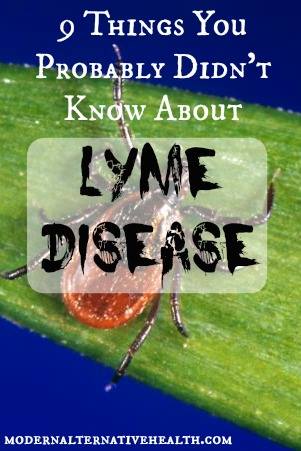By Rachel, Contributing Writer
As someone who has struggled with Lyme disease for over 6 years (and counting), has been married to someone with it for several years, and has 2 children currently battling it as well, this is a subject very near and dear to my heart. I do all I can to spread Lyme awareness because I can’t stand the thought of any other family going through what mine has.
The unfortunate reality is that, with approximately 300,000 new cases reported EVERY YEAR, more than HIV and breast cancer combined, there are countless families struggling in similar ways in the United States and around the world. Please learn all you can to protect your family from being the next statistic.
9 Things You Probably Don’t Know About Lyme Disease
Not Just Ticks
Any type of tick can transmit Lyme. Many other insects can as well, including mosquitos. The idea that only deer ticks can transmit Lyme is false. (Additional info here.)
It Can Take Seconds, Not Hours
There is no known minimum amount of time that a tick needs to be attached in order to transmit Lyme. It can happen in seconds in the right situation.
There is a Right Way To Remove a Tick
The correct way to remove a tick is to use tweezers to grab as close to the head as you can and pull straight up. Do not twist. There is also a product called a Tick Key that many people use. More info can be found here if you are interested.
…And a Wrong Way
Do not ever, under any circumstances, do anything to make the tick angry as you try to pull it off. This would include using things like oil, soap, or fire to get it to let go. I have also seen a video going around on social media recently showing people to use a wet cotton swab to “twirl” the tick off. These are extremely dangerous methods, and they multiply your risk of contracting Lyme.
The reason is that Lyme is transmitted when the tick regurgitates the contents of its stomach (including the Lyme spirochetes) into your body. It can happen any time, but it is much more likely to happen if you scare/anger it in any of the ways mentioned above. I know this is gross, but we all want to protect our families, right?
No Rash Needed
A bullseye rash NEED NOT be present in order for Lyme to be present. They very often do not occur. However, if there is a rash (it may not be a perfect bullseye), Lyme has FOR SURE been transmitted and you want to treat ASAP. If you don’t, you will very likely have serious problems down the road.
If Doing Antibiotics, Do the Full Course, As Soon as Possible
If you choose to go the antibiotic route after a tick bite — which I realize is controversial, but it is the most standard response at this time — you want to do at least 4 weeks, preferably 6-8 weeks. Something like a week or 2 (or even a single dose, which I’ve heard of far too often!) isn’t enough to get rid of acute Lyme. And the time to seek out treatment is immediately when you see an attached tick. Don’t wait.
Lyme Tests are Notoriously Inaccurate
You’d get about the same accuracy if you flipped a coin. Kind of kidding, but not really… There are tests available that are more reliable (though not 100%) but the average doctor has never heard of them and doesn’t have access to them.
Lyme Spreads in a Variety of Ways
Lyme CAN be transmitted from mother to baby, and it is also believed that it can be transferred sexually. (more info here and here.)
Lyme Exists in All Areas
Lyme Disease exists everywhere. If your doctor tells you “there is no Lyme here,” it is time to find a new doctor. Ticks travel on birds, and birds can fly really far. It can be spread person to person, and people travel and move. Enough said.
Fun Fact: The proper name is Lyme Disease. Capital ‘L’, and no ‘s.’ Don’t say lymes 🙂
Some helpful resources on Lyme:
Eye-opening documentary on Lyme. There is the original movie, Under Our Skin, and also a sequel.
One of the most accurate tests currently available
Ilads.org One of the most well-respected Lyme organizations



I’m confused. So will antibiotics cure Lyme desease? Or is it something that once you have it you have it for life and continually have to “battle” it.
I have chronic lyme. It took me several years to get a diagnosis then a year and a half of antibiotics to reduce symptoms enough to manage. I now manage with natural herbs, lifestyle ect.. but still suffer daily from residual effects.